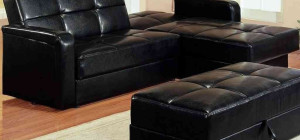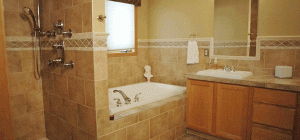 Smart room sensors can provide a whole new level of convenience to your home. They can improve comfort, reduce energy bills, and enhance safety.
Smart room sensors can provide a whole new level of convenience to your home. They can improve comfort, reduce energy bills, and enhance safety.
They can also work with voice assistants to give you hands-free control. These sensors can be integrated into almost any device that supports a smart home ecosystem.
Improved Comfort
Advanced smart room sensors like at Neat can make your home far more comfortable by allowing you to adjust your temperature settings independently for each room. This can enable you to prioritize living areas during the day and bedrooms at night, ensuring comfort where you need it most.
Several factors impact home comfort, including temperature, humidity, and indoor air quality. Small, low-cost sensors can allow you to adjust these parameters in each room individually to suit your needs.
Smart Room Sensor is a versatile LoRaWAN device that integrates practical functionality into a small form factor. It can measure and report temperature, humidity, light, movement, and shock, detect leaks, open/close doors and windows, and provide battery status updates.
Reduced Energy Bills
For many homeowners, energy bills are a significant concern and can be expensive. However, introducing inexpensive intelligent devices can help cut these costs by 20% to 30%.
Occupancy sensors can reduce energy costs by tying into room lighting and thermostats to turn lights off or dim them when no one is present in an area. Motion sensors that switch on and off lights are also a great option.
In addition to reducing energy, intelligent sensor technology can save on maintenance costs by alerting you when something is wrong. For example, a leaky pipe could be detected and fixed before it causes damage.
A new sensor in the works may change our thoughts about occupancy sensors. This innovative technology, dubbed the IPOS borrows from a smartphone’s camera and optics to increase accuracy in detection.
Improved Indoor Air Quality
Advanced smart room sensors can help you monitor indoor air quality and provide several other benefits. These monitors can be placed in different areas of the home and report on various parameters, including carbon dioxide (CO2), volatile organic compounds (VOCs), particulate matter, and more.
These sensors can be paired with the digital HVAC system, enabling on-demand ventilation and air purification based on real-time air quality readings. This makes sure the healthiest air possible is being circulated throughout the home.
You can also monitor occupancy and use these devices to reduce unnecessary heating consumption and direct ventilation efforts accordingly. For example, if people are gathered in a particular area, you can use occupancy sensors to detect this and trigger instant heating or ventilation system adjustments.
Increased Safety
Some different intelligent sensors can help increase your safety in the home. These include motion and occupancy sensors that can automatically turn on lights if someone walks into the room and water detection devices that can detect any leaks in your house and notify you to take action quickly.
These are great for helping to ensure that you are safe in your home at all times, especially at night. They can also alert you if there is a fire or other danger, and you can even set them up to notify your smartphone if you’re away from home.
Various sensors are available, including ceiling-mounted occupancy sensors for large spaces and a photosensor for windowed areas. These devices can be configured to automatically switch on or off lights when a person enters or exits a room and provide advanced temperature control and lighting management.



![Are You a Secret Hoarder? [Infographic]](https://lerablog.org/wp-content/plugins/wp-thumbie/timthumb.php?src=http://lerablog.org/wp-content/uploads/2014/11/Nation-of-Clutter-IG-v21.png&w=300&h=140&zc=1)



